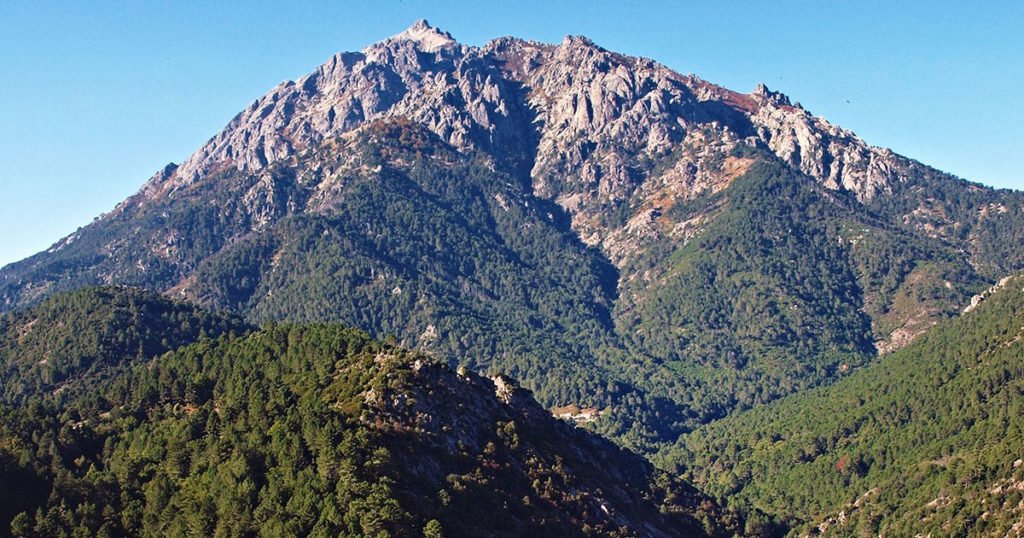The Journey to Comfort: How Atmos Hammock Was Created
A Cold Night in Corsica – The Birth of an Idea
The idea for Atmos was born in the mountains deep in the heart of Corsica. My younger brother Will (16 at the time) and I (18) were traveling north, making our way across the rugged island, a land of dramatic peaks and isolated villages set in the middle of the Mediterranean. That morning we had set out from Ajaccio (Napoleon’s birthplace) to catch the train to Vizzavona, gateway to the legendary GR20 hiking trail. Our goal: to Summit Mont D’Oro, a towering 2,389-meter peak that looked down on the small commune.
Mont D’Oro
Vizzavona
We hit the trail immediately, winding our way up steep, dusty paths, but the higher we climbed the quicker the daylight seemed to slip away. We turned back and before we knew it, dusk was upon us; we had to set up camp.
Since it was June and we were in the middle of the Mediterranean, we had packed light—just our hammocks, a couple of towels, some clothes, but that night, as exhausted as we were after a full day of hiking up a mountain, neither one of us could fall asleep. Our backs were very cold! Hammocks, we quickly realized, offered zero insulation from the air beneath us. Laying there in the dark, wishing I had brought a warmer blanket, I kept thinking: there had to be a better way to sleep comfortably while keeping a lightweight pack.
That was the moment the idea for Atmos was born.
Concept to Prototype – Overcoming Obstacles
Upon arriving home, I threw myself into building prototypes. I had no experience with inflatable structures, but I was determined to make it work. My first attempts were crude—plastic sheeting sealed with soldering irons, duct tape, clothing irons. As you can imagine, none of them held air.
I sourced TPU-coated ripstop nylon, the same material used in air mattresses, hoping this would be the breakthrough I needed. Again using both a soldering iron and a clothing iron, I meticulously sealed section by section of my desired shape. Hours turned into days but the results were the same – most of the seams just leaked air.
I needed a way to create strong, airtight seals. That’s when I came up with the idea of a heated press—something like a giant waffle iron. So I designed a metal frame in the shape of the seals I wanted to imprint on the fabric, lined it with heating cable, and spent a week drilling, threading, and tying down the cable with steel wire. Roughly 1200 individual holes were drilled. Then I backed this metal frame with a sheet of plywood for stability. When I flipped the switch, the frame warmed up, but that was it: it only got warm. Nowhere near hot enough. I was frustrated, but not ready to quit. So I added ceramic insulation behind the frame and tried again. This time, the heat was real. I tested it with a sheet of nylon, pressed down, and... success!
Or so I thought.
Now a new problem emerged. As the frame heated up, it expanded and warped, lifting in the center and leaving gaps in the seal. Clamps and sheer force weren’t enough to fix it. Even with five people pressing down, the bowing frame refused to cooperate.
I was crushed. After weeks of work, I was left with a press that couldn’t apply even pressure. Discouraged, I stepped away from the project for a while. But only in body, not in mind – the idea wouldn’t leave me alone.
If I was going to make Atmos a reality, I needed more heat, more pressure. A complete redesign.
… And I had a few ideas.
But first, I had a heating press to dismantle.
Crafting the perfect hammock press
I decided to start from scratch. I was going to use what I learned from the first press, and I was going to get it right. And after hundreds of hours – and many months later – I had built a reinforced, triple-layered wooden frame, fastened with hundreds of screws and lag bolts, to support my metal frame. Instead of 120V power, I upgraded to 240V for double the heating output, and to solve the uneven pressure issue, I installed 11 industrial-strength electric actuators, each capable of delivering 600 pounds of force. To maximize heat transfer, I stripped the aluminum sheathing off the heating cables, and once again lined the frame with ceramic insulation. Lastly, I added felt and cotton batting to ensure even pressure distribution.
Then came the moment of truth.
I flipped the breaker, and within minutes, the temperature soared to 230°C. I was so excited! Was this finally it? Had I really just built a giant press? I had to find out… obviously.
A few test fabric strips later, and it was time to check the results. Perfect. Solid seams. No gaps.
It was time to press the world’s first, full-sized, inflatable insulated hammock. It was time for Atmos.
What started as a frigid, restless night in the mountains of Corsica when I was eighteen years old has now become a fully functional, innovative hammock—one that could redefine outdoor comfort.


















